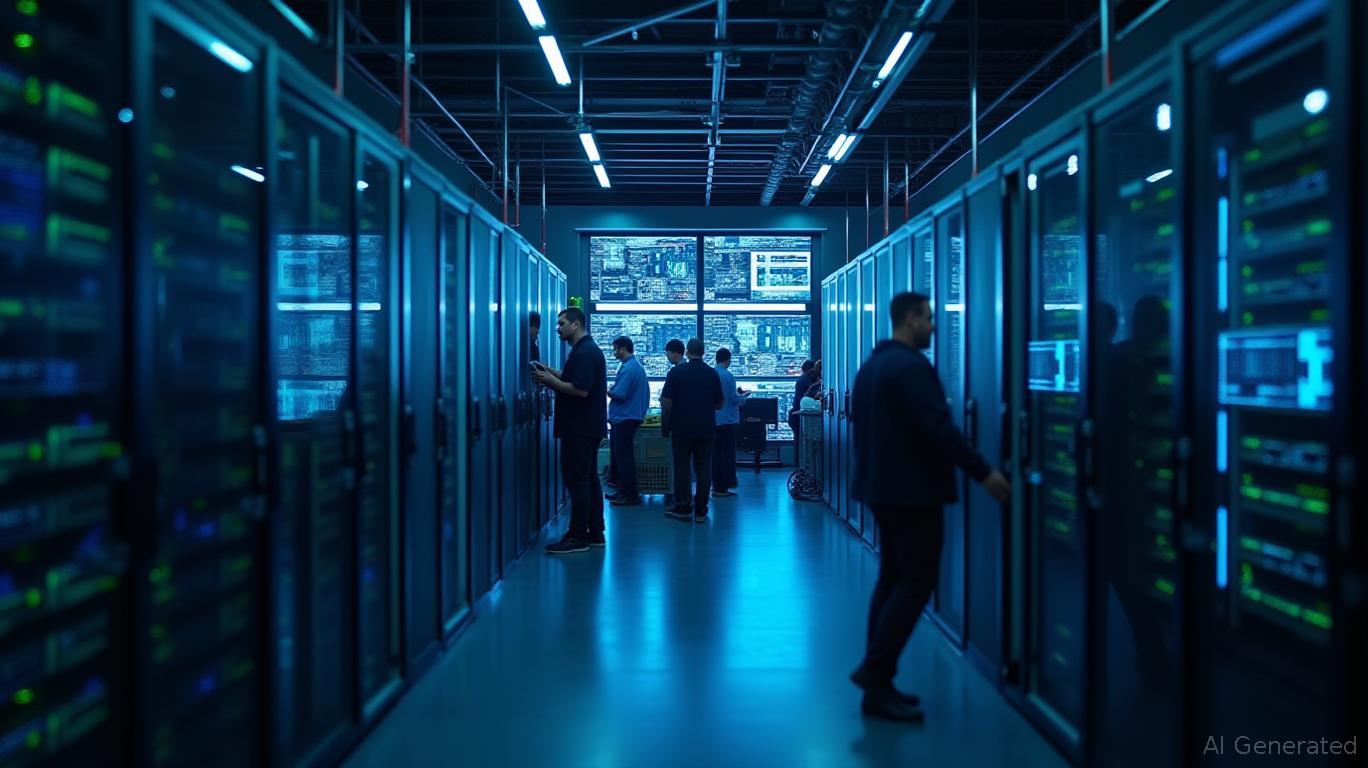NVIDIA and Oracle: Navigating AI's New Reality—Why Infrastructure Dominance Prevails Over Cost Cuts
The AI revolution is at an inflection point. DeepSeek's $6 million DeepSeek R1 model, trained on 2,000 NVIDIA H800 GPUs, has upended assumptions about the cost and scale required for advanced AI. While this breakthrough has rattled NVIDIA's stock and sparked fears of a GPU glut, the broader narrative is far more nuanced. Investors must look beyond short-term volatility to the structural demand for high-performance computing (HPC) and scalable AI infrastructure. Here's why NVIDIA and Oracle remain critical plays in this landscape—and why their near-term dips present buying opportunities.
---
### NVIDIA: The Resilience of HPC Leadership
NVIDIA's stock has faced pressure as DeepSeek's efficiency-driven model suggests that fewer, cheaper chips can achieve what once required 16,000 GPUs. However, this overlooks two critical factors:
1. Specialized Workloads Still Require Brute Force: DeepSeek's R1 may reduce training costs, but tasks like real-time autonomous driving, drug discovery, and exascale simulations demand the raw power of NVIDIA's H100 and upcoming Blackwell (GB200) architectures.
2. Blackwell's Strategic Positioning: NVIDIA's next-gen chips, designed for multi-chip modular systems (e.g., 4-socket NVL72 racks), are engineered to dominate in AI factories—large-scale compute clusters optimized for training and inference.
The recent dip to $87/share (from a 52-week high of $610) reflects panic over China's H20 GPU export bans. Yet NVIDIA's Q2 results show Blackwell shipments hitting 1,500 racks—up 50% sequentially—and a $13.5B revenue contribution. The $5.5B H20 inventory write-off is a one-time hit, not a death knell.
---
### Oracle: The Quiet Rise of Secure AI Infrastructure
While NVIDIA fuels the engines of AI, Oracle is building the highways. The company's Oracle Cloud Infrastructure (OCI) has quietly emerged as a leader in cost-effective, secure AI deployment. DeepSeek R1's integration with OCI exemplifies this:
- Performance at Scale: R1 runs efficiently on low-resource OCI instances (1 OCPU, 6GB RAM), yet can scale to larger workloads for enterprise analytics.
- Security First: Unlike cloud providers requiring internet connectivity, OCI isolates DeepSeek R1 instances, eliminating data leakage risks—a critical advantage for financial and healthcare firms.

Oracle's role in the $500B Stargate Project—a partnership with OpenAI and SoftBank to build global AI superclusters—positions it to capture 10%+ of the $800B AI infrastructure market by 2027. Its AI analytics tools, now capable of integrating open-source models like DeepSeek, offer a compelling value proposition for businesses seeking compliance-driven AI.
---
### The Dual-Track AI Market: Cost vs. Performance
The AI landscape is bifurcating into two tiers:
1. Cost-Efficiency Play (China/Developing Markets): DeepSeek R1 and rivals like Alibaba's Qwen prioritize affordability, ideal for edge computing and emerging markets.
2. Performance Play (U.S./Enterprise): NVIDIA's GPUs and Oracle's cloud remain indispensable for sectors requiring precision (e.g., aerospace, genomics).
This duality creates a winner's curse for pure-play cost-cutters. While DeepSeek's $0.55/API token price undercuts OpenAI's $15, it lacks the ecosystem (tooling, security, scalability) that enterprises demand. NVIDIA and Oracle, by contrast, offer compliance, interoperability, and legacy system integration—non-negotiables for Fortune .
---
### Investment Thesis: Buy the Dip, Own the Future
NVIDIA:
- Risk/Reward: Near-term headwinds (H20 bans, Blackwell ramp delays) are priced into the stock. A $100/share level represents a 20% discount to its long-term fair value. Historically, when NVIDIA delivered revenue surprises exceeding estimates by ≥5%, a 30-day holding period generated an average annual return of 73.86%, though with significant volatility (max drawdown of -66.73%). This underscores the stock's potential to rebound strongly after earnings-driven dips.
- Catalyst: Q3 results will confirm Blackwell's adoption rate in hyperscalers like Microsoft and AWS.
Oracle:
- Growth Vector: OCI's 40%+ annual cloud revenue growth (now $18B) is underappreciated. AI integration could add 10-15% to its $120B valuation.
- Moat: Regulatory scrutiny of OpenAI/Google's data practices will drive enterprise demand for Oracle's secure, on-premise solutions.
---
### Conclusion: Infrastructure Outlives Fads
DeepSeek's disruption is real—but it's a feature, not a bug, of AI's evolution. Cost efficiency will democratize AI adoption, but scalable, secure infrastructure remains the bedrock of enterprise applications. NVIDIA and Oracle are the twin pillars of this future. Investors who buy now at discounted multiples will be positioned to profit as the market recognizes that AI's growth isn't about cutting corners—it's about building better roads.
Action Items:
1. Accumulate NVIDIA stock below $120.
2. Add Oracle on dips below $100/share.
3. Monitor Blackwell adoption rates and OCI's AI revenue contributions.
The AI era isn't over—it's just getting interesting.
---
JR Research Disclaimer: This analysis is for informational purposes only. Always conduct your own research before making investment decisions.
Ask Aime: Is NVIDIA's stock a buy now?

Comments
No comments yet